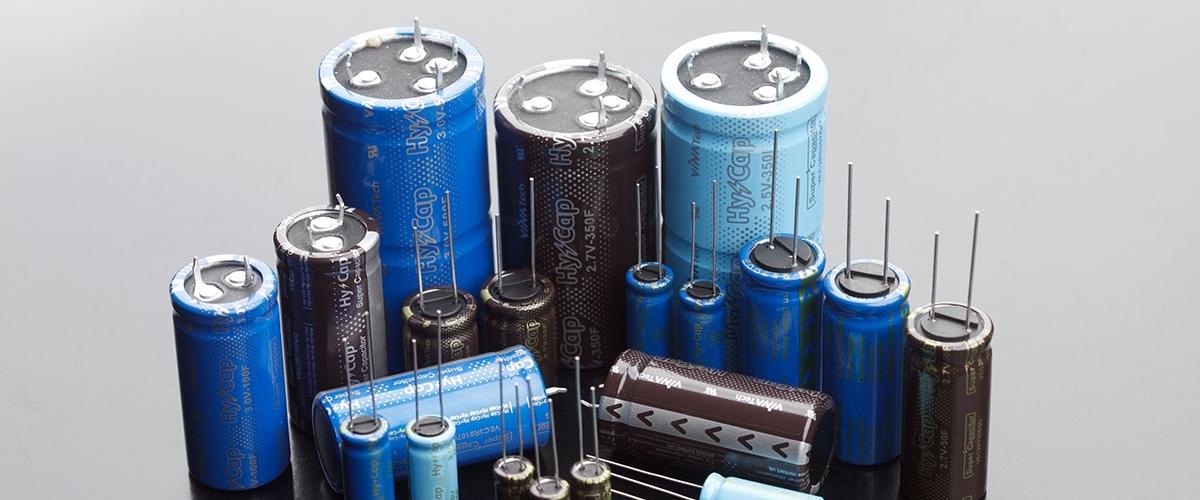
Supercapacitors - super and even ultra
The issue of battery efficiency, speed, capacity and safety is now becoming one of the main global problems. In the sense that underdevelopment in this area threatens to stagnate our entire technical civilization.
We recently wrote about exploding lithium-ion batteries in phones. Their still unsatisfactory capacity and slow charging have certainly annoyed Elon Musk or any other electric vehicle enthusiast more than once. We have been hearing about various innovations in this area for many years, but there is still no breakthrough that would give something better in everyday use. However, for some time now there has been a lot of talk about the fact that batteries can be replaced with fast-charging capacitors, or rather their "super" version.
Why do ordinary capacitors not hope for a breakthrough? The answer is simple. A kilogram of gasoline is approximately 4. kilowatt-hours of energy. The battery in the Tesla model has about 30 times less energy. A kilogram of capacitor mass is only 0,1 kWh. No need to explain why ordinary capacitors are not suitable for a new role. The capacitance of a modern lithium-ion battery would have to be several hundred times larger.
A supercapacitor or ultracapacitor is a type of electrolytic capacitor that, compared to classical electrolytic capacitors, has an extremely high electrical capacitance (on the order of several thousand farads), with an operating voltage of 2-3 V. The biggest advantage of supercapacitors is very short charging and discharging times compared to other energy storage devices (e.g. batteries). This allows you to increase the power supply to 10 kW per kilogram of capacitor weight.
One of the models of ultracapacitors available on the market.
Achievements in laboratories
Recent months have brought a lot of information about new supercapacitor prototypes. At the end of 2016, we learned, for example, that a group of scientists from the University of Central Florida created new process for creating supercapacitors, saving more energy and withstanding more than 30 XNUMX. charge/discharge cycles. If we replaced the batteries with these supercapacitors, not only would we be able to charge a smartphone in seconds, but that would be enough for more than a week of use, Nitin Chowdhary, a member of the research team, told the media. . Florida scientists create supercapacitors from millions of microwires coated with a two-dimensional material. The strands of the cable are very good conductors of electricity, allowing for fast charging and discharging of the capacitor, and the two-dimensional material covering them allows for the storage of large amounts of energy.
Scientists from the University of Tehran in Iran, who produce porous copper structures in ammonia solutions as an electrode material, adhere to a somewhat similar concept. The British, in turn, opt for gels like those used in contact lenses. Someone else took the polymers to the workshop. Research and concepts are endless around the world.
Scientists involved in project ELECTROGRAPH (Graphene-Based Electrodes for Supercapacitor Applications), funded by the EU, has been working on the mass production of graphene electrode materials and the application of environmentally friendly ionic liquid electrolytes at room temperature. Scientists expect that graphene will replace activated carbon (AC) is used in the electrodes of supercapacitors.
The researchers produced graphite oxides here, split them into sheets of graphene, and then embedded the sheets into a supercapacitor. Compared with AC-based electrodes, graphene electrodes have better adhesive properties and higher energy storage capacity.
Boarding passengers - the tram is charging
Research centers are engaged in research and prototyping, and the Chinese have put supercapacitors into practice. The city of Zhuzhou, Hunan Province, recently unveiled the first Chinese-made tram powered by supercapacitors (2), which means it does not require an overhead line. The tram is powered by pantographs installed at stops. A full charge takes about 30 seconds, so it takes place during the boarding and disembarking of passengers. This allows the vehicle to travel 3-5 km without external power, which is enough to get to the next stop. In addition, it recovers up to 85% of energy when braking.
The possibilities for the practical use of supercapacitors are numerous - from energy systems, fuel cells, solar cells to electric vehicles. Recently, the attention of specialists has been riveted to the use of supercapacitors in hybrid electric vehicles. A polymer diaphragm fuel cell charges a supercapacitor, which then stores electrical energy used to power an engine. The fast charge/discharge cycles of the SC can be used to smooth out the required peak power of the fuel cell, providing nearly uniform performance.
It seems that we are already on the threshold of the supercapacitor revolution. Experience shows, however, that it is worth restraining excesses of enthusiasm so as not to get confused and not be left with a discharged old battery in your hands.
